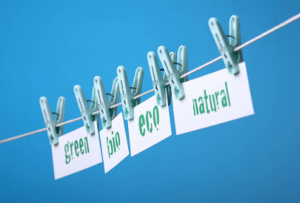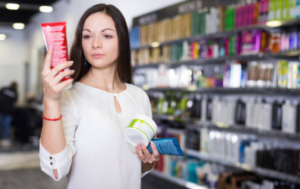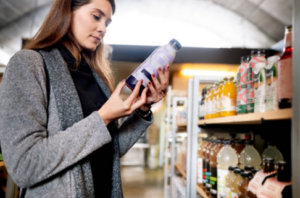The Truth About “Natural” Claims

In a world where consumers are increasingly conscious of the products they use on their bodies and the impact they have on the environment, the term “natural” has become a buzzword in the beauty industry. From skincare to haircare, makeup to personal care products, brands are quick to slap a “natural” label on their packaging, promising purity and eco-friendliness.
But behind these claims lies a murky reality of greenwashing—a deceptive marketing practice that misleads consumers into believing products are more environmentally friendly or natural than they actually are. In this blog post, we’ll delve deep into the world of greenwashing in the beauty industry, uncovering the truth behind “natural” claims and empowering consumers to make informed choices.
Understanding Greenwashing
Greenwashing is a term used to describe the deceptive practice of presenting a product, brand, or company as more environmentally friendly or socially responsible than it actually is. This can involve exaggerating the environmental benefits of a product, making false or misleading claims, or using vague, ambiguous language to create a perception of eco-friendliness.
In the beauty industry, greenwashing often takes the form of “natural” or “organic” claims. Brands may use these terms to imply that their products are free from synthetic chemicals, artificial fragrances, or other potentially harmful ingredients. However, upon closer inspection, many of these products contain the same synthetic additives and preservatives as their conventional counterparts, casting doubt on the authenticity of their “natural” claims.

Decoding “Natural” Claims
When it comes to deciphering “natural” claims in the beauty industry, it’s essential to look beyond the marketing hype and scrutinize the ingredients list. Here’s a deeper dive into some common tactics used by brands to greenwash their products:
- Misleading Labeling: Many brands use terms like “natural,” “green,” or “clean” on their packaging to create a perception of eco-friendliness. However, the presence of these terms doesn’t necessarily mean that the product is entirely natural or free from synthetic additives. Some products labeled as “natural” may contain only a small percentage of natural ingredients, with the rest being synthetic or artificial. For example, a shampoo labeled as “natural” may contain natural botanical extracts but also synthetic fragrances, preservatives, and surfactants.
- Ambiguous Language: Vague terms like “botanical,” “plant-based,” or “derived from nature” can be misleading, as they don’t provide specific information about the ingredients used or their sourcing. While these terms may imply that a product is made from natural ingredients, they can be used to mask the presence of synthetic additives. For example, a moisturizer labeled as “botanical” may contain plant-derived oils but also synthetic emulsifiers, thickeners, and stabilizers.
- Certification Confusion: Certification labels like “organic” or “cruelty-free” can provide valuable information about a product’s environmental and ethical credentials. However, not all certifications are created equal, and some may be more stringent than others. For example, a product labeled as “organic” may contain only a small percentage of organic ingredients, with the rest being conventional or synthetic. Similarly, a product labeled as “cruelty-free” may not be entirely free from animal-derived ingredients or may still be tested on animals in some markets.
- Green Packaging: Some brands use eco-friendly packaging materials to create the illusion of sustainability, even if the product inside is far from environmentally friendly. While recyclable or biodegradable packaging is undoubtedly a step in the right direction, it’s essential to consider the environmental impact of the product itself, including its ingredients, sourcing, production, and disposal. A product packaged in a recyclable bottle may still contain synthetic chemicals or contribute to pollution and waste throughout its lifecycle.
- Greenwashing by Association: In some cases, brands may engage in greenwashing by associating themselves with environmental causes or initiatives without taking meaningful action to reduce their environmental footprint. For example, a brand may donate a portion of its profits to environmental organizations or participate in tree-planting campaigns to create the perception of eco-friendliness, even if its products and practices are not environmentally sustainable.
The Rise of Clean Beauty
Amid growing awareness of greenwashing in the beauty industry, consumers are increasingly seeking out brands that are transparent, ethical, and genuinely committed to sustainability. This has led to the rise of the clean beauty movement—a movement that prioritizes products made with safe, non-toxic ingredients, transparent labeling practices, and a commitment to environmental and social responsibility.
Clean beauty brands are challenging the status quo by offering products that go beyond just being effective—they’re also safe for both consumers and the environment. Here are some additional insights into the rise of clean beauty:
Non-Toxic Ingredients: Clean beauty brands formulate their products without potentially harmful ingredients like parabens, phthalates, sulfates, and synthetic fragrances. Instead, they prioritize natural and organic ingredients that are gentle on the skin and free from known toxins. By eliminating these harmful chemicals, clean beauty brands reduce the risk of allergic reactions, skin irritation, and long-term health effects for consumers.
Transparent Labeling Practices: Clean beauty brands are committed to transparency and honesty in their labeling practices. They provide clear and accurate information about their ingredients, sourcing practices, and production methods, empowering consumers to make informed choices about the products they use. Transparent labeling helps build trust with consumers and fosters a sense of accountability within the beauty industry.
Environmental Sustainability: Many clean beauty brands are also committed to reducing their environmental footprint and minimizing their impact on the planet. They prioritize sustainable sourcing of raw materials, minimize waste and energy consumption during production, and use eco-friendly packaging materials. Some clean beauty brands even implement refillable packaging programs or offer recycling initiatives to further reduce waste.
Ethical Production Practices: In addition to environmental sustainability, clean beauty brands prioritize ethical production practices and social responsibility. They ensure fair wages and safe working conditions for their employees, support local communities and artisans, and adhere to strict ethical standards throughout their supply chain. By prioritizing ethics and social responsibility, clean beauty brands demonstrate a commitment to doing business in a way that benefits people and the planet.
Consumer Education and Empowerment: Clean beauty brands are dedicated to educating consumers about the importance of ingredient transparency, safety, and sustainability. They provide resources, guides, and educational content to help consumers make informed choices about the products they use and the impact they have on their health and the environment. By empowering consumers with knowledge and information, clean beauty brands enable them to take control of their skincare routines and make choices that align with their values.
Advocacy and Industry Change: Beyond their own product offerings, clean beauty brands often advocate for broader industry change and regulatory reform. They support initiatives to strengthen regulations around ingredient safety and transparency, push for greater accountability within the beauty industry, and work to raise awareness about the importance of clean, safe, and sustainable beauty practices. By actively engaging in advocacy and industry change, clean beauty brands are driving positive transformation within the beauty industry and shaping a more sustainable future for all.

Navigating the Clean Beauty Landscape
As consumers, navigating the clean beauty landscape can be overwhelming, with a multitude of brands vying for our attention and dollars. To make informed choices and avoid falling prey to greenwashing, here are some tips to keep in mind:
1. Read the Ingredients List Thoroughly: Take the time to read the ingredients list on product packaging carefully. Look for products made with simple, recognizable ingredients, and avoid products with long, complex ingredient lists full of unfamiliar chemicals. Ingredients are typically listed in descending order by concentration, so prioritize products with natural ingredients listed higher up.
2. Educate Yourself About Common Synthetics: Familiarize yourself with common synthetic additives and potentially harmful chemicals found in beauty products. Some ingredients, such as parabens, phthalates, sulfates, and synthetic fragrances, have been linked to health concerns and environmental harm. Look for products that are free from these ingredients or opt for brands that disclose their full ingredient lists and are transparent about their safety and sourcing practices.
3. Research Brands and Products: Before making a purchase, research brands and products to learn more about their values, commitments, and sustainability initiatives. Look for reviews, testimonials, and independent third-party certifications to verify claims of naturalness and sustainability. Reputable certifications include USDA Organic, COSMOS Organic, EWG Verified, and Leaping Bunny (cruelty-free).
4. Look for Transparency: Seek out brands that are transparent about their ingredients, sourcing practices, and production methods. Look for brands that disclose the percentage of natural or organic ingredients used in their products and provide detailed information about their sustainability initiatives. Transparency is key to building trust with consumers and demonstrating a genuine commitment to ethical and sustainable practices.
5. Consider the Entire Product Lifecycle: When evaluating the sustainability of a beauty product, consider its entire lifecycle—from sourcing and production to packaging and disposal. Look for brands that prioritize sustainable sourcing of raw materials, minimize waste and energy consumption during production, and use eco-friendly packaging materials. Additionally, consider the environmental impact of product disposal and opt for products with minimal packaging or packaging that is recyclable, biodegradable, or refillable.
6. Support Ethical and Cruelty-Free Brands: Choose brands that are committed to ethical production practices and animal welfare. Look for brands that are certified cruelty-free by reputable organizations like Leaping Bunny or PETA, and avoid products that have been tested on animals. Supporting ethical and cruelty-free brands sends a message to the industry that animal testing is not acceptable and encourages more brands to adopt humane practices.
7. Trust Your Instincts: Ultimately, trust your instincts and choose products that align with your values and priorities. If a brand’s claims seem too good to be true or if something feels off, it’s okay to trust your gut and look elsewhere. By supporting brands that are transparent, ethical, and genuinely committed to sustainability, you can vote with your dollars and drive positive change in the beauty industry.

In a marketplace saturated with “natural” claims and greenwashed products, it’s more important than ever for consumers to educate themselves, ask questions, and demand transparency from beauty brands. By understanding the tactics used by brands to greenwash their products and arming themselves with knowledge, consumers can make informed choices that support their health, values, and the planet. Together, we can hold brands accountable, drive positive change in the beauty industry, and create a future where sustainability and transparency are the norm—not the exception.

